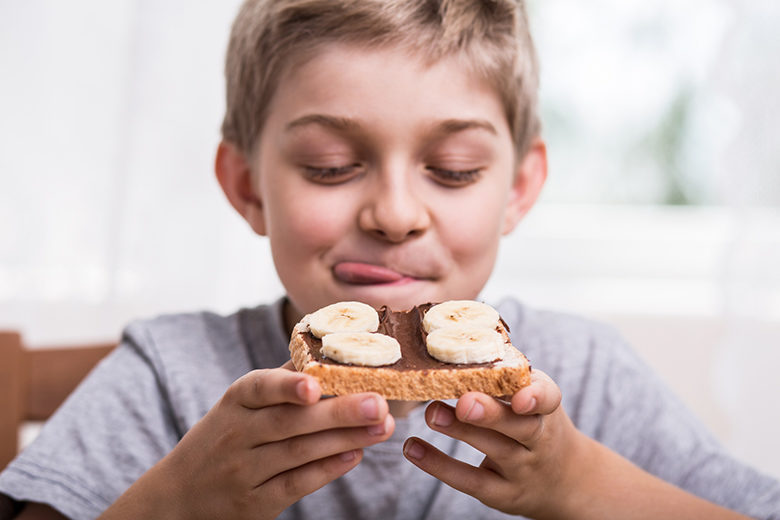
Many families have special shelves or drawers in the kitchen cupboards where they keep “kid-friendly” foods. Some parents allow kids to choose a snack from the shelf if they ate their dinner, others give access only at a certain time of the day, while some kids can eat whenever and whatever they want from the shelf, especially if it’s stocked with healthier items. The nutritional value of food on the snack shelves varies wildly from more wholesome choices such as washed and precut fruit to treats like chips and cookies.
I make sure to always address the issue of snack shelves with parents because the way they approach them can make or break the development of their child’s long-term healthy relationship with food. Here is why:
1. Kids do not need special foods. Most of the snacks on the snack shelves are designed for and marketed to kids. This sends a message that they need special types of food. Although kids’ nutritional needs may slightly differ from adults (for example, younger kids need more fat and less fiber), they can be met by eating the same diet as the rest of the family. Snacks are typically high in fat, salt and/or sugar. More importantly, because of their easy-to-like texture and flavor, they are often preferred to less processed options like fruit, veggies and whole grains, and children are not motivated to push themselves to learn to enjoy healthier foods.
2. Kids need structure when it comes to meals and snacks. Having access to the snack drawer 24/7 undermines the parental role as nutritional gatekeepers. Mealtime structure is a foundation of good eating habits. If kids have access to snack shelves, they tend to graze and eat worse at set mealtimes.
3. Parents get to decide what to serve for meals and snacks. To expand variety in diet and improve its nutritional value, kids need to be exposed to new foods all the time.
Expert opinions
Experts agree that while access to snack shelves is not a good idea for younger kids, older children need it. As the little ones grow into teenagers, allow them make their own choices when it comes to snacks, recommends feeding expert Ellyn Satter, providing they still arrive to the dinner table on time and hungry enough to eat.
Adina Pearson, a dietitian from Healthy Little Eaters, says: “I’m pretty strict about WHEN my kids can eat, so at their current young age I think it would just cause problems for them to have a snack drawer JUST for them.”
Maryann Jacobsen from Fearless Feeding also advises against special foods like granola bars, crackers and chips, to prevent kids from associating snack time with them. She also thinks that allowing children to take from the snack shelf anytime may teach them to eat in the absence of hunger, grabbing the snacks when they are bored. Instead, she recommends that parents organize snacks so healthy options are easy to access.
Game plan.
Here are a few steps that will make clearing the snack shelves as easy as possible.
Step 1. Establish structure. Three meals and 1-2 snacks at set times work for most children. Between meals and scheduled snacks offer only water. Eating between meals and snacks is grazing, whether your child munches on carrots or cookies. Avoid offering snack foods as a reward for eating meals or good behavior.
Step 2. Instead of letting kids choose what they want, decide on a snack menu yourself. Make sure to offer a familiar item alongside a less popular or new food. For example, if you child likes yogurt, serve it alongside a fruit your child is still learning to like.
Step 3. Offer special foods and treats as snacks from time to time and allow kids to eat the amount they find satisfying. At the same time, make nutrient dense and less-processed foods like whole grains, lean protein, fruit and vegetables available more often than “special” snacks like crackers and cookies. While these treats will probably remain your child’s favorites, he will learn to enjoy a wider variety of healthier food if he sees them on the table at meals and snacks.




